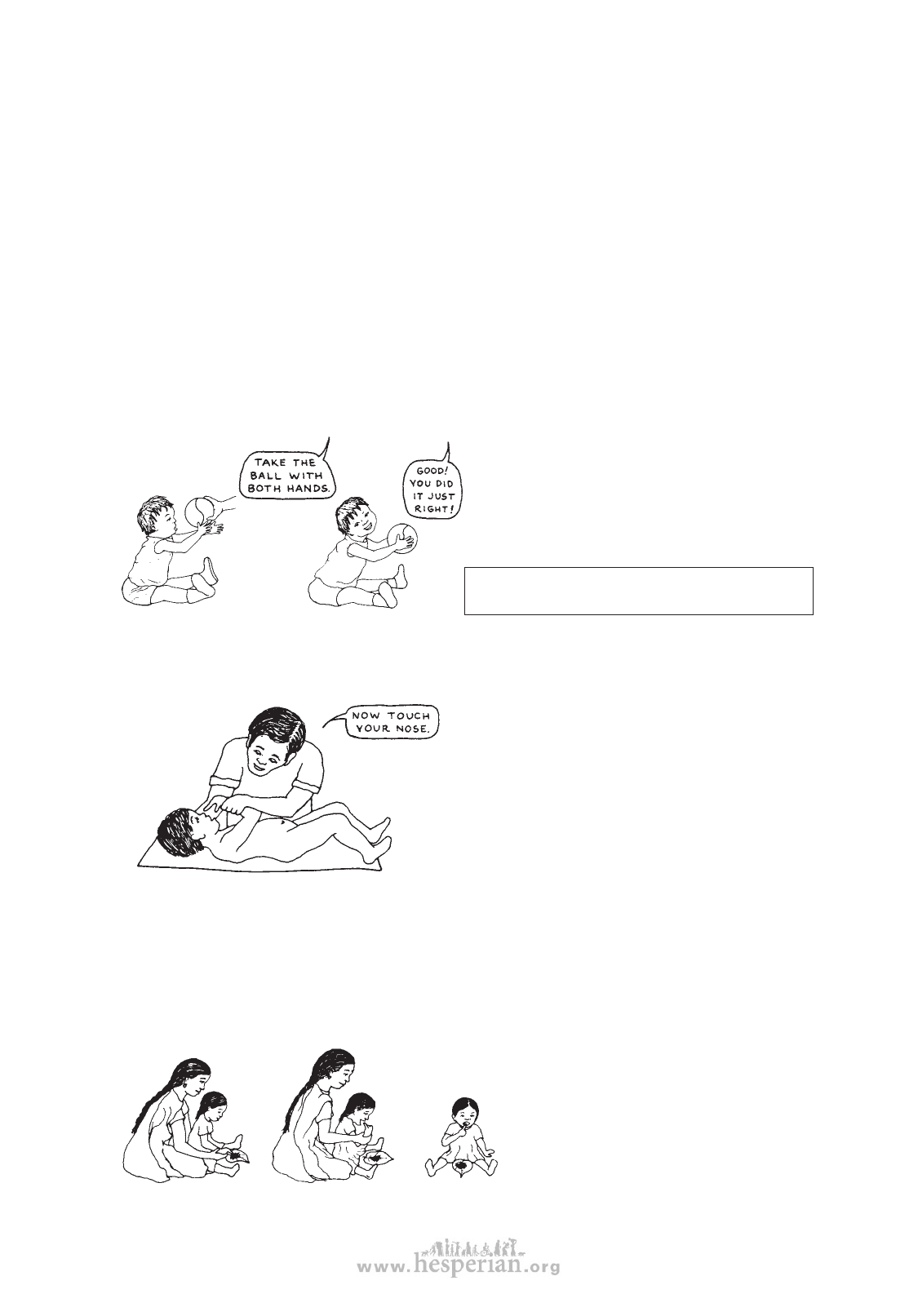
CHILD DEVELOPMENT
GENERAL GUIDELINES FOR HELPING A CHILD’S DEVELOPMENT
How a family member or rehabilitation worker relates to a child when trying to teach
her new skills can make a big difference in her whole development. It can affect how
fast or well she learns the new skill. More importantly, it can influence the child’s
confidence, behavior, and readiness to learn.
There are a few simple methods that you can use to help a child gain a better
understanding of her own body, prepare her for learning language, and help her
relate to other persons in a friendly, cooperative way.
297
These guidelines are especially helpful when doing early learning activities with
children who are developmentally delayed:
1. Praise the child a lot. Praise him, hug him
lovingly, or give him a little prize when he
does something well (or when he makes a
good effort).
Explanation
Praising success works much better
(and is much kinder) than scolding
or punishing failure. When the child
tries to do something and fails, it
is best to ignore it or simply say
something like: “Too bad, better luck
next time.”
CAUTION: Avoid giving sweets or food as prizes
—especially if the child is fat (see box on p. 340).
2. Talk a lot to the child. Using clear, simple
words, say everything that you do with him.
Explanation
A child listens to and begins to learn
language long before he begins to
speak. Although it may seem as
though he does not understand or
respond, still talk to him a lot. If you
think he does not hear, talk to him
but also use ‘sign language’. Make
sure he looks at you as you speak.
(See p. 313 to 314.)
3. When you are helping a child learn a new skill,
guide her movements with your hands.
For example, to teach a child to bring her hands to her
mouth (or to eat by herself) you can,
help her put her
finger in a
food she
enjoys,
and then to put
her finger
in her
mouth.
After the child
has learned
to do this, let
her do it by
herself.
Explanation
It usually works better to gently
guide the child than to tell her how
to do something. If she tries to
do something but has difficulty,
guiding her hands so that she is
successful will make her a lot more
eager to learn the skill than if you
say “NO—do it like this!”
disabled village children